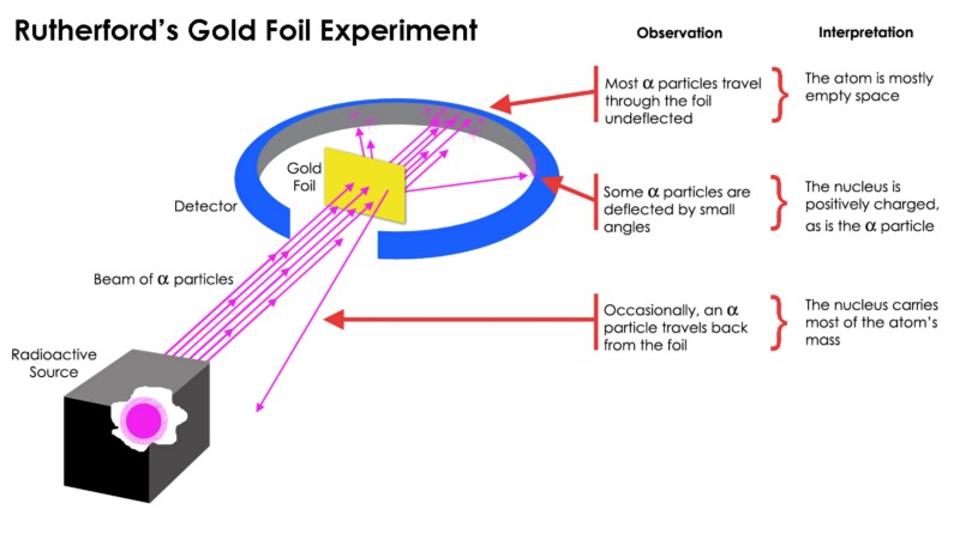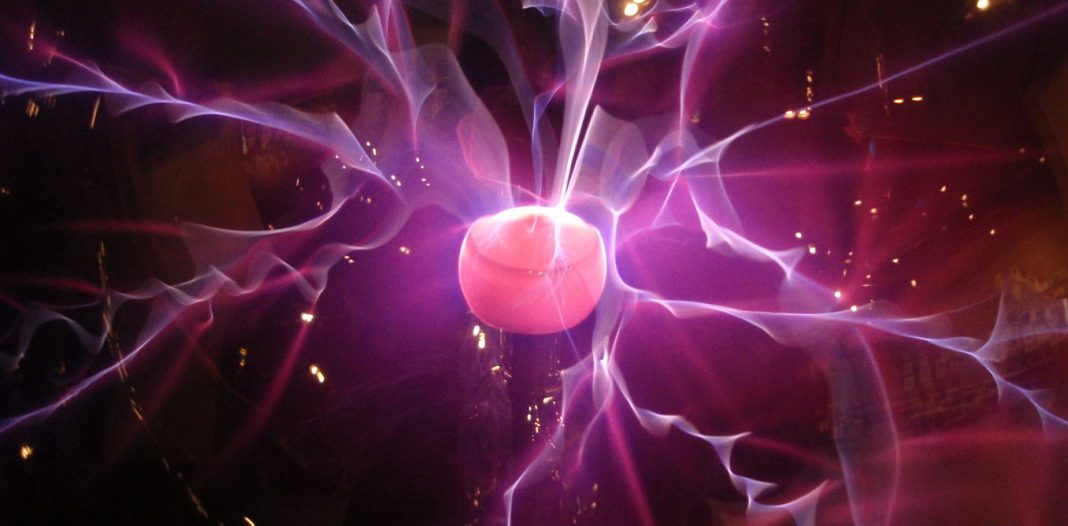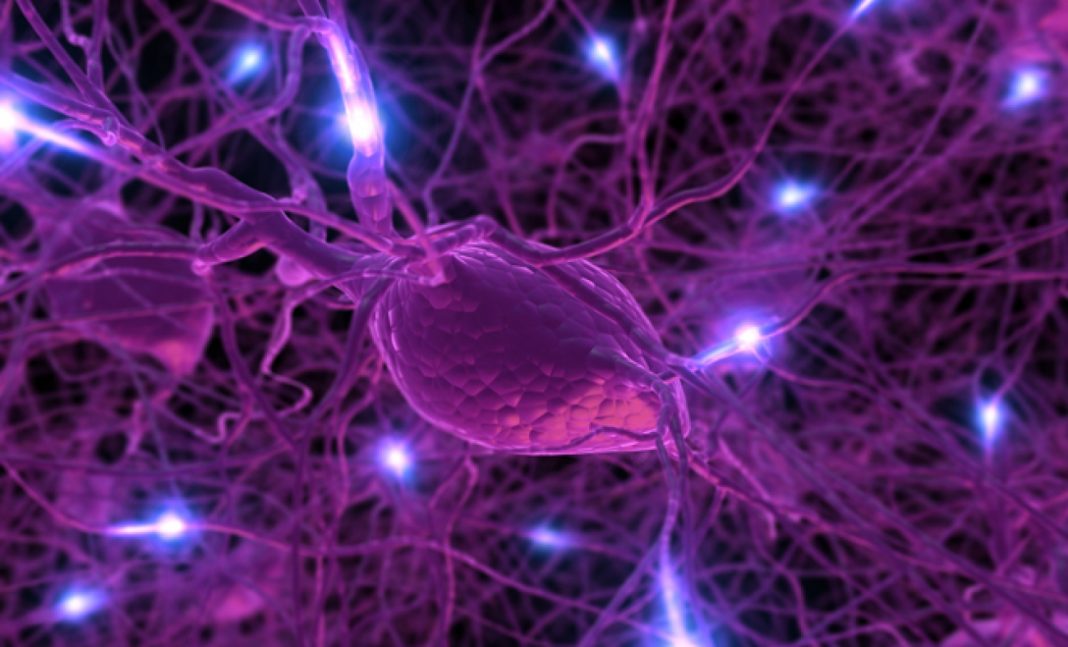So far to date, scientists have found that the best way to unfold new secrets about the fundamental Universe is to collide particles with one another with enough energy to force them open so we can see inside. It’s worked quite well so far too. But, there’s another way that scientists can go about this and that’s by examining their interactions when they bind together in the unusual and unstable manner that they do. By examining the particle’s interactions, scientists can unpick holes in our own understanding and could be just what we need in the world of physics.
Rutherford’s Gold Foil Experiment
This experiment first came about over a century ago and led to Rutherford discovering the atomic nucleus. It basically featured a piece of gold foil that had been hammered very thin, only a few atoms in thickness, with subatomic particles. The results from the experiment showed that while most particles passed through the foil some bounced off at various angles, including some that bounced off in the opposite direction to their original direction. The reason for this is because atoms have nuclei at their centers. If Rutherford would have been able to hit these nuclei with enough energy to smash the nuclei apart he would have seen that protons and neutrons are in fact made up of even smaller particles called quarks and gluons.

These tiny little particles have some very interesting and unique properties to them. They’re the only known particles of the Standard Model that have a color change that works unlike any other that you may have been used to. Some other points to be aware of are:
- Mass is always attractive and only comes in one type (positive). If there is mass, there is no equivalent anti-mass to counteract it.
- An electric charge may be either positive or negative and can be canceled out by the other, creating a composite set of particles electrically neutral.
- In regards to the color change, there are three varieties in can come in: red, green or blue, and their anti-varieties anti-red (cyan), anti-green (magenta), or anti-blue (yellow), and color-neutral or white.
So, essentially what this means is that as long as the combination of colors ends in it being color-neutral, it should be perfectly stable in our Universe (at least temporarily). This could be done by combining a color charge with its anti-color charge, such as with a quark-antiquark pair), or by combing three colors or three anticolors, such as a proton which is made up of three quarks. In each of these cases, quarks or antiquarks may change color by emitting and absorbing gluons, but the combination will stay color-neutral.

Mesons are the name given to quark-antiquark combinations. If there are only two quarks available you’re limited to the number of combinations you can make, but with more, the possible combinations you can make will increase. Eventually, you’ll end up with a whole spectrum of possible particles successfully confirmed.
Baryons can be created from the three quark or antiquark combinations, and as with mesons, the better our technology has become, the more of these we’ve detected. And, as you may have guessed already, quark-antiquark pairs and three quark combinations aren’t the only possible solutions out there. Some colorless objects that are also worth noting are:
- A tetraquark state is where two quarks and two antiquarks are present.
- A pentaquark state is where four quarks and an antiquark are present.
- A dibaryon state is where six quarks (or antiquarks) combine into one object.
- A Quasi-stable configuration of all gluon could also result in a colorless combination called a glueball.
For many years, these objects were purely theoretical but in the mid-2000’s pentaquarks were first discovered, followed by tetraquarks in a few years after that, and more recently, in 2015, the first pentaquark state was announced. This is great news in the world of physics as we’re able to finally verify important fundamental factors about the Universe. Also, if we can discover tetraquarks and pentaquarks there’s almost certainly more to be found. It’s this kind of exotic states that enable us to push farther the limits of physics and create new opportunities for discovery for the future.
More News to Read
- Why Not Use the Moon as A Gas Station to Get to Mars?
- Researchers Discover How to Store Information In Chemicals
- Are These Mini Spherical Reactors the Answer to Fusion Energy’s Problems?
- Scientists Subject Quantum Entanglement to Extreme Levels of Acceleration
- New Monster Mars Rover Looks a Little Scary











